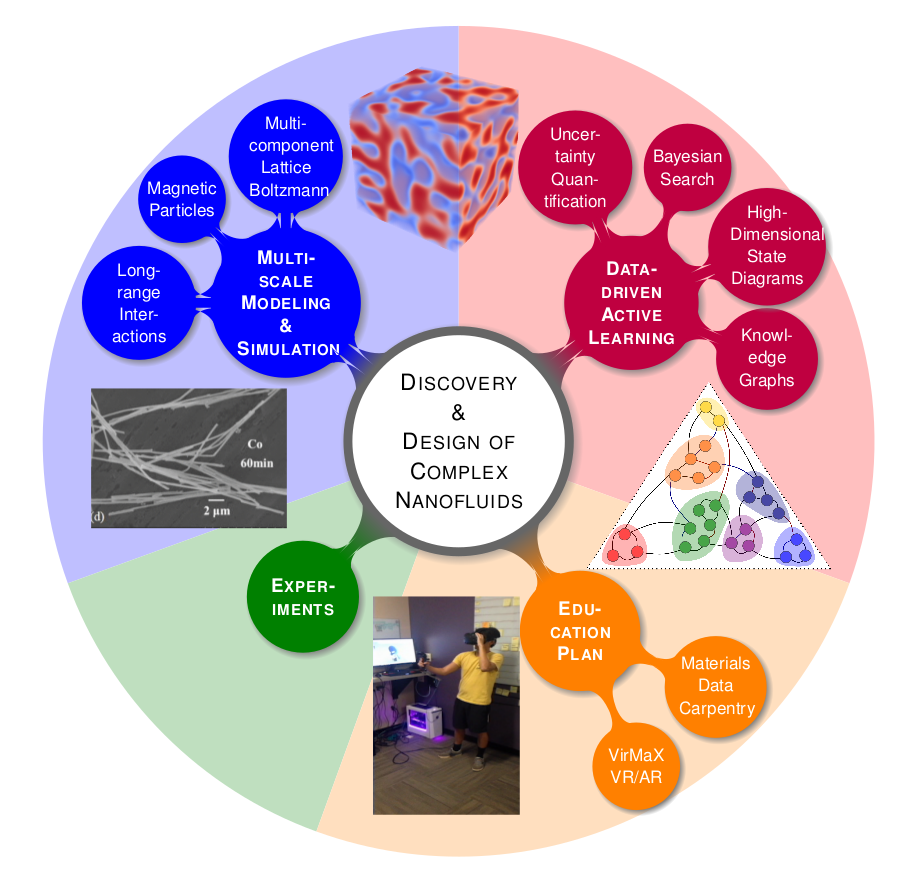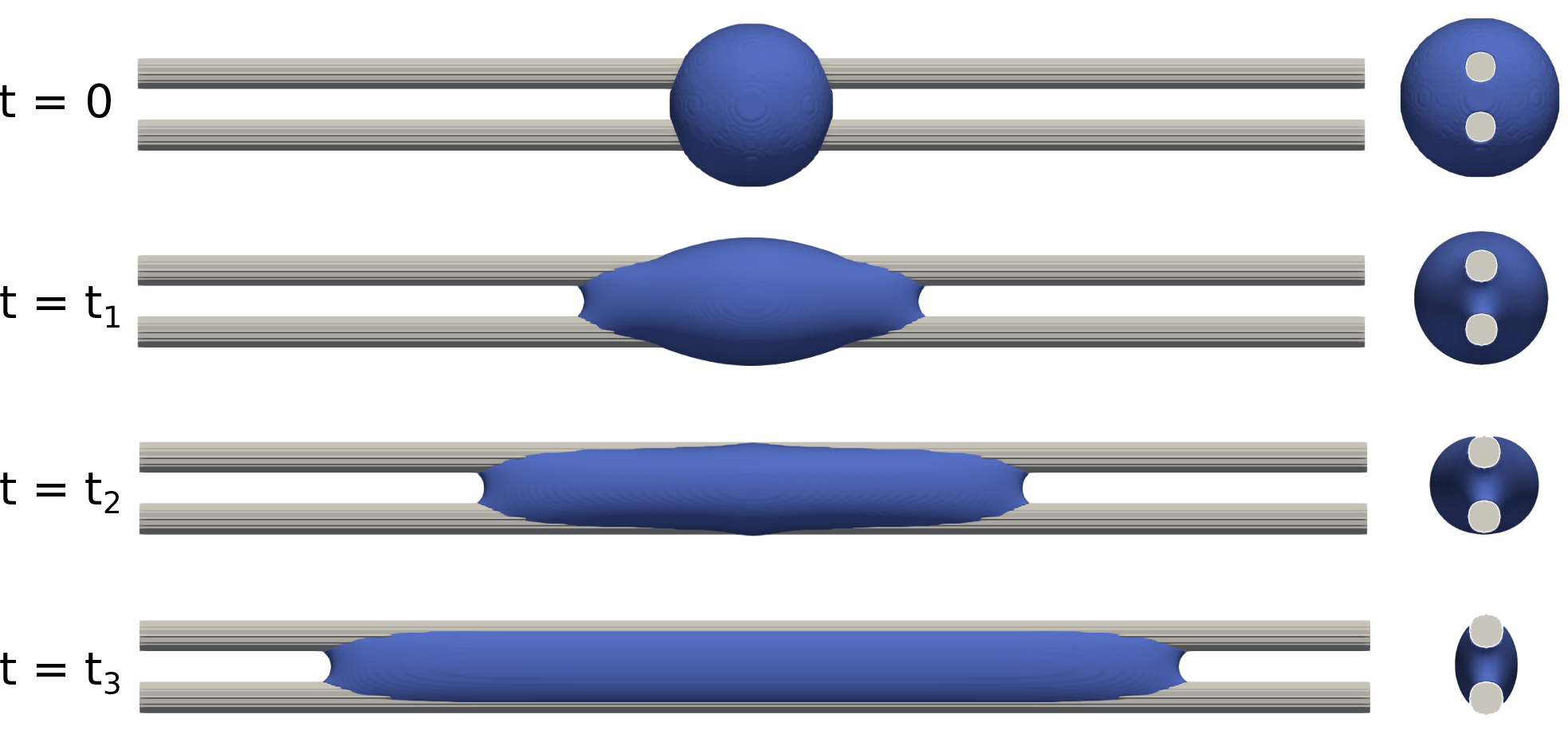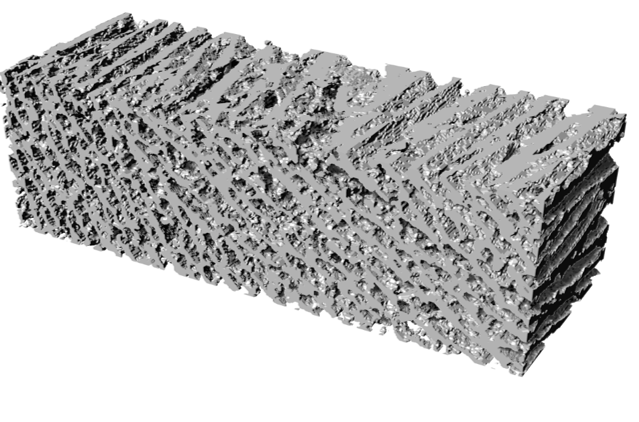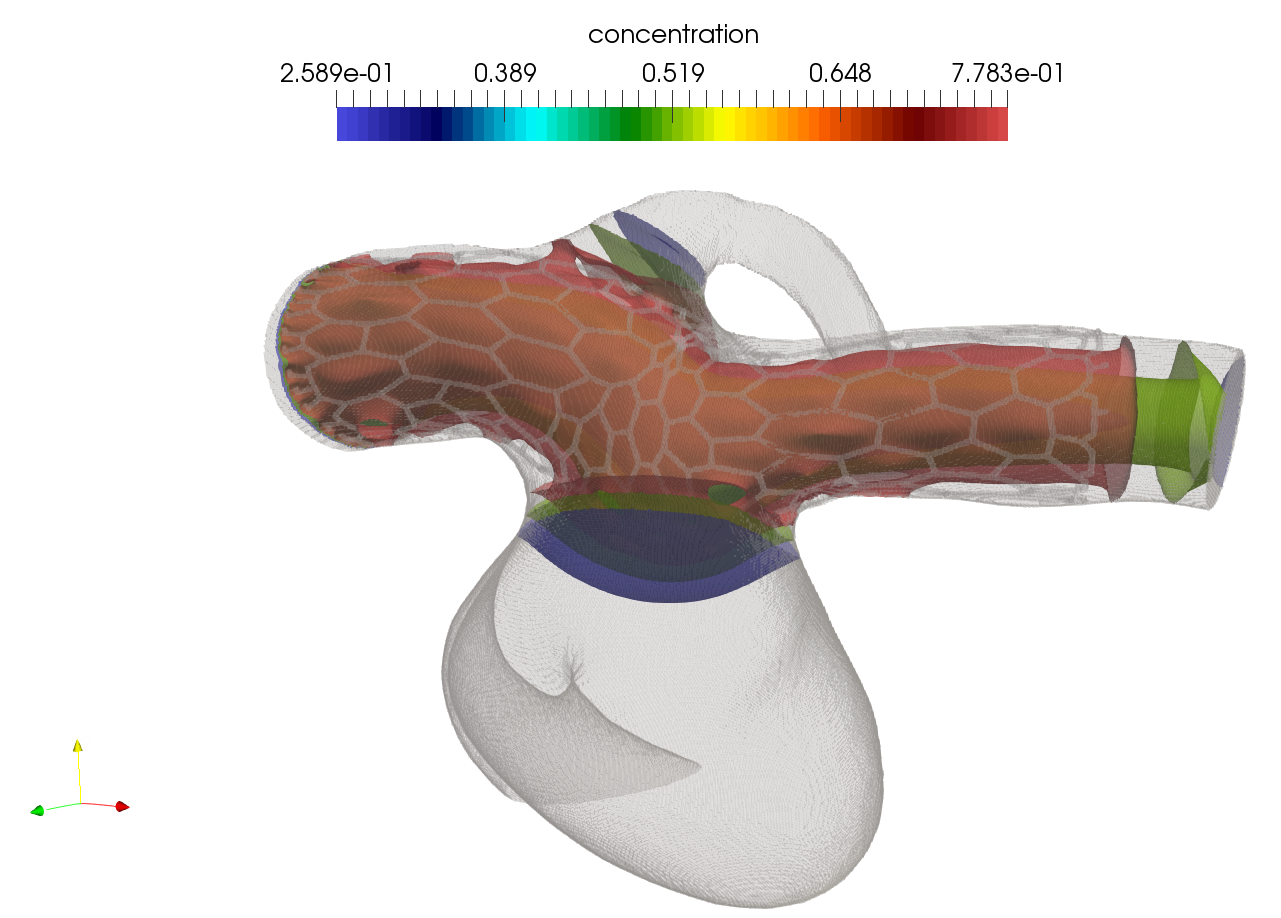
Complex multiphase fluids such as polymeric mixtures and colloidal suspensions can be used for encapsulation and sequestration of chemical components. The mesoscale structure and nonlinear rheology of these soft interface-dominated materials raises many challenges for the development of control mechanisms that enable design of smart fluids that self-organize and respond to external stimuli. Interfacial assembly of colloidal particles can arrest the phase separation of immiscible fluids such that they become trapped in metastable states such as fluid-bicontinuous gels. These arrested phase states emerge in particulate multicomponent mixtures due to the intricate interplay of physico-chemical interactions across different length and time-scales. Our research aims to gain a fundamental understanding of the connection between microscale self-assembly and mesoscale phase formation in particle-stabilized multiphase fluids, with a focus on non-equilibrium phenomena and the emergence of kinetically arrested phase states. In particular, we investigate the use of magnetic particles in external magnetic fields to control interfacial assembly and manipulate the mesoscale structure of droplets and fluid compartments. We employ large-scale simulations of emulsions and fluid-bicontinuous bijels to study the conditions and parameters under which such control is possible. Through integration of multiscale simulation methods and data-centric approaches, we seek to accelerate the discovery and design of new nanofluid materials and to deliver new processing principles for fluid-based materials with targeted properties and functionality. More information on this project can be found in the press releases Developing smart materials with supercomputers and Five Clemson University engineers win top awards for early-career researchers. This project is supported by the National Science Foundation under under NSF Award DMR-1944942. Any opinions, findings and conclusions or recommendations expressed in this material are those of the author(s) and do not necessarily reflect those of the National Science Foundation.

In filtration applications, liquid mixtures invariably come into contact with a material substrate. Therefore the phase behavior and morphology become strongly dependent on the static and dynamic properties of the fluid-solid interface. At the point where an interface between liquid domains meets the surface, a three-phase contact line is formed that separates regions of the surface covered by the respective fluid domain. In equilibrium, the contact line is characterized by a contact angle, i.e., the angle between the tangent to the macroscopic interface shape and the surface. The dynamic evolution of the system towards the equilibrium state, referred to as wetting or spreading, involves a motion of the contact line across the surface. The moving contact line problem continue to be a topic of active research in materials science and many other disciplines. While wetting and spreading on planar substrates have been studied extensively, the more complicated case of curved surfaces has received less attention. It has been shown that droplets on fibers can assume shapes that cannot be realized on planar substrates. In this project, we study the wetting morphologies of droplets on fibers and investigate the influence of fluid-fiber interactions on surface tension, spreading, and hysteresis. The morphological configurations of droplets on fibers have practical significance for filtration applications. Both the shape and the adhesion energy of the contact area between the liquid and the fiber will affect the interaction with the fluid motion through a filter material and thus will influence the adsorption and retention of liquid components. The outcomes of our research will aid the development of advanced fibers with enhanced filtration and separation capabilities in filter materials.

Efficient filtration and separation techniques for wastewater decontamination are key issues for sustainable economic growth and environmental safety. Nonwoven fibrous membranes are widely used as filtration media, and tailoring the microstructure of the pore space is a key to improving filtration efficiency and preventing membrane fouling. However, predicting effective properties such as permeability and tortuosity for complex porous microstructures remains a challenging task. We have developed a computational framework for generating realistic random fibrous media with a wide range of porosities and systematic analysis of the effect of pore size distribution on permeability and tortuosity. Statistical distributions of pore and throat sizes are obtained by extracting the pore network by an enhanced watershed segmentation. Using generated or reconstructed fiber networks, we perform pore-scale lattice Boltzmann simulations to predict the fluid flow through nonwoven fibrous media. By combining the morphological analysis of the pore space with pore-scale flow simulations, we are able to quantify the effect of the microstructure on the effective fluid transport properties such as permeability and tortuosity. In addition, we investigate the conditions under which droplet adsorption and coalescence occur when emulsions interact with fibrous media. The goal is to tailor the porosity and surface wettability of fibrous materials in order to defeat filter fouling and improve separation efficiency. In combination with experimental imaging techniques such as X-ray computed tomography or scanning electron microscopy, the quantitative connection between microstructure and fluid transport paves the way to rapid characterization and design of porous media with tailored properties for filtration and separation applications. More information on this project can be found in the MADE in SC Research Focus. This project is supported in part by the National Science Foundation EPSCoR Program under NSF Award OIA-1655740. Any opinions, findings and conclusions or recommendations expressed in this material are those of the author(s) and do not necessarily reflect those of the National Science Foundation.

Energy materials are critical for a reliable supply of energy that can sustain human needs in view of growing population and increasing industrialization in an interconnected world. Li ion batteries are the primary energy storage devices for new transportation technologies such as electric vehicles and mobile devices. This project seeks to discover and design improved Li electrode materials through an integration of experiments and 3D simulations of mass and charge transport in hierarchical porous electrodes. We will use experimental data and images to develop a computational multiscale model for Li transport. Our approach combines tools from image processing and mesoscopic simulation techniques. We perform multiscale simulations of virtual porous geometries to find structures with optimal energy and power density. The long-term objective is to augment the iterative loop with data-centric techniques and machine learning that can automatically discover candidate structures in a complex search space. We will also consider generalizations of our approach to broader classes of electrochemical applications, e.g., fuel cells. This project is carried out within the NSF EPSCoR Track 1 RII project "Materials Assembly and Design Excellence in South Carolina (MADE in SC)” and is supported by the South Carolina EPSCoR program under GEAR award 20-GE05.

In the biomedical domain, we simulate blood flow in patient-specific geometries to support clinical diagnosis and decision making. We are using clinical computer tomography images to reconstruct virtual models of blood vessels, which are then used to perform large-scale lattice Boltzmann simulations of blood flow. Specifically, we investigate how hemodynamics are associated with the formation and rupture of brain aneurysms. Due to the variability of the complex flow patterns and the limited understanding of the relevant mechanisms, it is a challenge to correlate physical observables with the probability of bleeding and rupture. In collaboration with data scientists, we use machine learning techniques such as gradient boosting and random forests for feature selection and classification. These approaches promise to produce robust, interpretable regression models for the coupling between hemodynamic flow features and the rupture of brain aneurysms.
A second thrust concerns simulations of blood flow in the hepatic portal venous system to predict portal hypertension in patients with chronic liver disease. Elevated blood pressure due to cirrhosis can have severe complications such as ascites, variceal bleeding, and hepatic encephalopathy. The standard indicator for portal hypertension is an elevated hepatic venous pressure gradient (HVPG). The drawback of HVPG is that it can only be measured invasively and the procedure needs to be repeated to monitor the effectiveness of specific medications to treat portal hypertension. We seek to develop a computational model that will enhance the discriminating ability of non-invasive measurements such as Doppler ultrasound and hepatic elastography for diagnosis of portal hypertension. The model promises to lead to transformative advances in personalized medicine through patient-specific risk quantification. Virtual physiological models will reduce the need for invasive HVPG procedures, thereby leading to significant benefits for patient health and treatment outcomes while reducing risks and costs. This project is a collaboration with Prisma Health Greenville Memorial Hospital. Drs. Devane and Abrams are gratefully acknowledged for providing the CT scans for the image reconstruction.